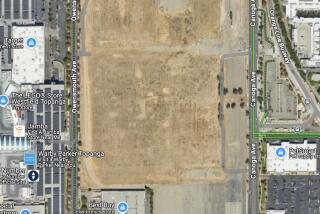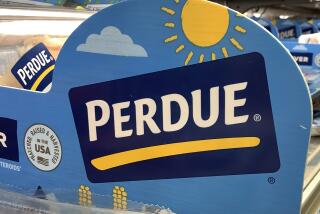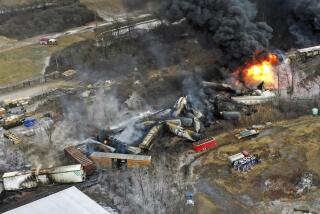U.S. Probes Rockwellâs Shipping of âHotâ Materials
The U.S. Department of Transportation is investigating whether Rockwell Internationalâs Santa Susana Field Laboratory violated federal safety regulations by shipping equipment that emitted excessive radioactivity.
The truckload of contaminated equipment crashed into a bridge in eastern Pennsylvania before dawn on Oct. 24. None of the metal boxes of equipment ruptured, but measurements taken after of the crash showed excessive radiation at the surface of one container and on the underside of the truck.
Ed Bonekemper, a senior government attorney in Washington, said the case âis being actively pursuedâ to see if Rockwell or others involved with the shipment should be charged with safety violations, which are punishable by civil penalties of up to $10,000 per violation. Bonekemper said it might take two or three months to complete the investigation.
Rockwell officials have repeatedly declined to discuss the incident. But in a brief report to the Department of Energy, for which Rockwell does nuclear work, the company admitted that it failed to follow its own rules in packaging the shipment.
âProper compliance with procedural requirements would have prevented shipment of a non-complying package,â Rockwell said in the Oct. 31 document, known as an âunusual occurrence report.â
The cargo included contaminated fuel baskets, which are metal devices placed inside steel shipping casks to keep nuclear fuel rods from bouncing around.
The fuel baskets apparently had been used years ago to bring spent fuel to the Santa Susana lab west of Chatsworth, where Rockwell did fuel decladding work for the Department of Energy until 1986. That work involved breaking open fuel rods and removing radioactive uranium and plutonium for shipment to government reservations.
Terry Vaeth, acting deputy manager of the Energy Departmentâs San Francisco office, said he believed that Rockwell was returning the baskets to their owners as part of its cleanup work at Santa Susana.
Most of the baskets were owned by Nuclear Assurance Corp., a Georgia firm that supplies baskets and shipping casks to the nuclear industry. But Vaeth said one basket belonged to the Department of Energy.
The truck, owned by McGil Specialized Carriers, first hauled the governmentâs basket to the Savannah River plant in South Carolina, part of the governmentâs atomic weapons complex. The Nuclear Assurance baskets were then driven to Alaron Corp. in Wampum, Pa., which stores and refurbishes contaminated equipment for firms such as Nuclear Assurance.
The driver apparently got lost on a country road a few miles from the Alaron plant. He tried to drive through an underpass that was too low for the trailer, which lost about 10 feet of its roof in the crash.
The driver and a passenger were not injured. The truck was driven to the Alaron plant under escort by Pennsylvania state police and emergency response teams.
Measurements by Alaron and state officials showed a radiation level of 250 millirem per hour on the underside of the truck--higher than the 200-millirem limit set by the government. One box was emitting up to 2,500 millirem per hour, well above the limit of 1,000 millirem per hour.
A person sitting on the box for an hour would have received a radiation dose equivalent to about 50 chest X-rays. However, the levels were too low to pose a hazard in areas through which the truck passed.
In its report to the Department of Energy, Rockwell said it failed to put lead shielding in the most radioactive box, which would have lowered surface radiation to permissible levels.
Rockwell said it decided to compensate by putting lead shielding on the floor of the trailer. The company said it believed that the excessive radiation reading beneath the truck resulted from the boxesâ sliding off the shielding from the impact of the crash.
More to Read
Sign up for Essential California
The most important California stories and recommendations in your inbox every morning.
You may occasionally receive promotional content from the Los Angeles Times.









